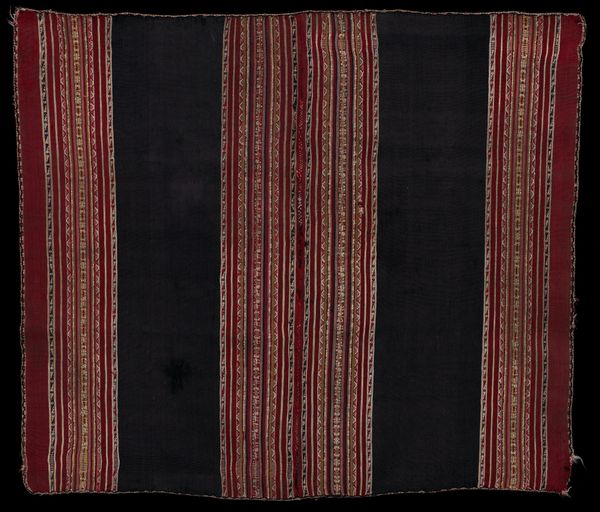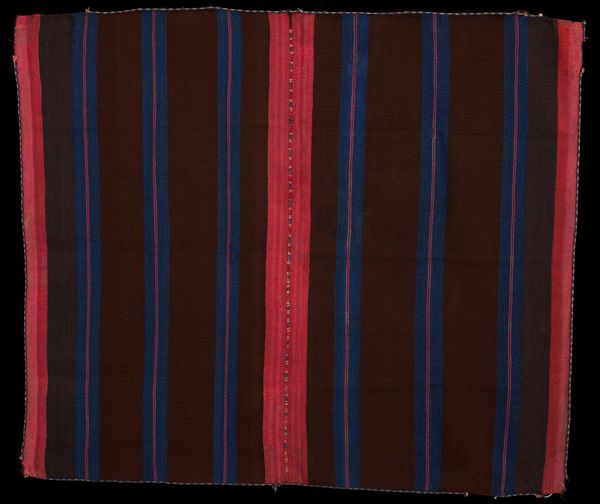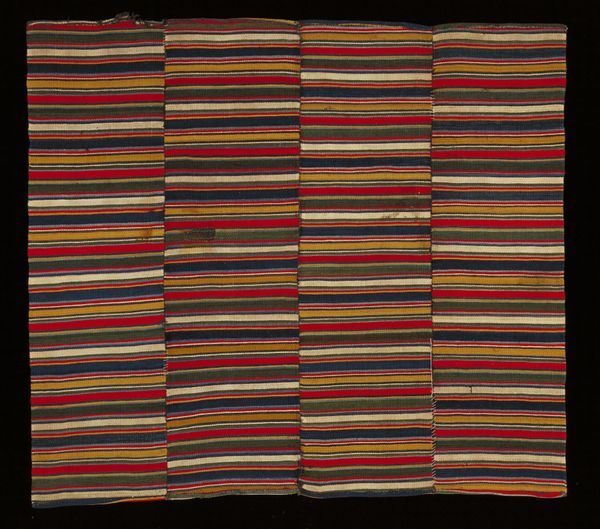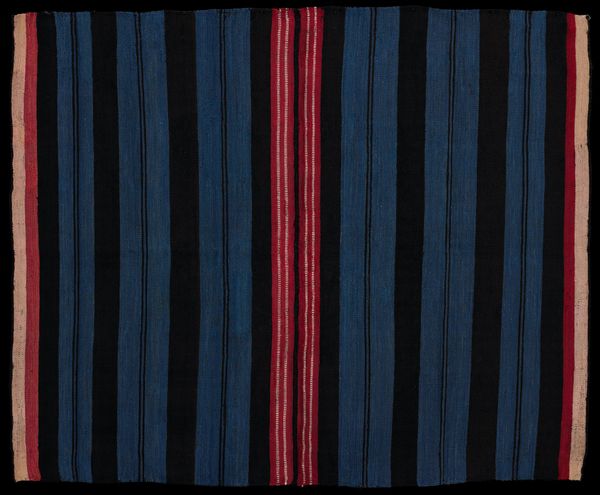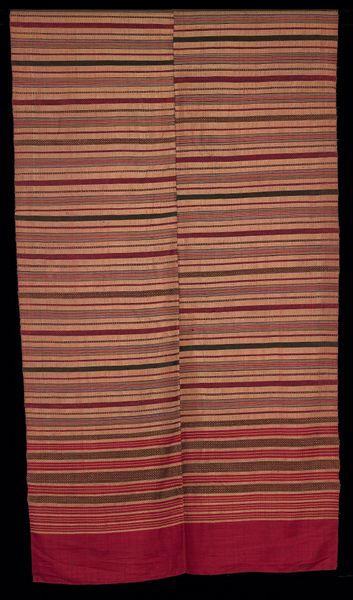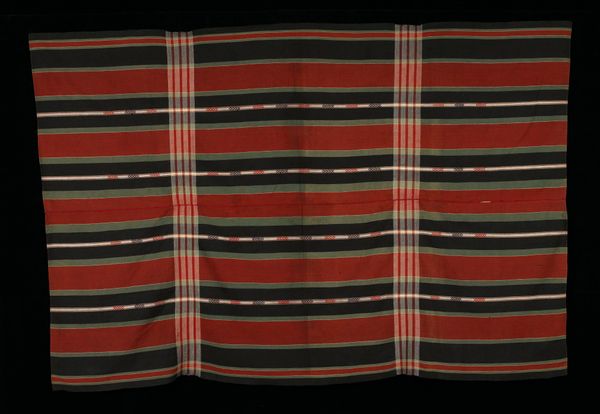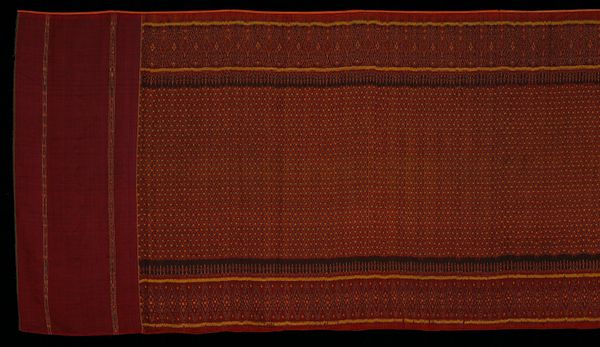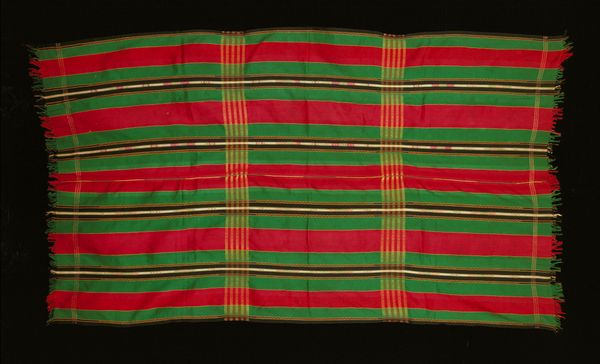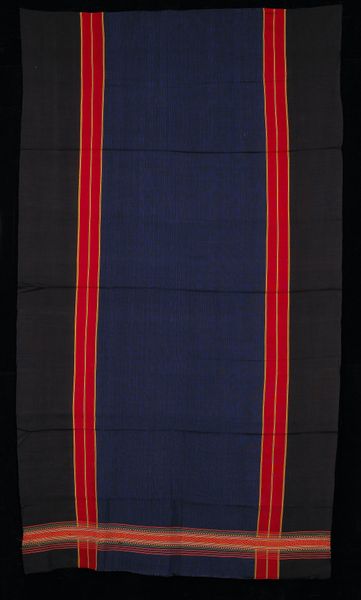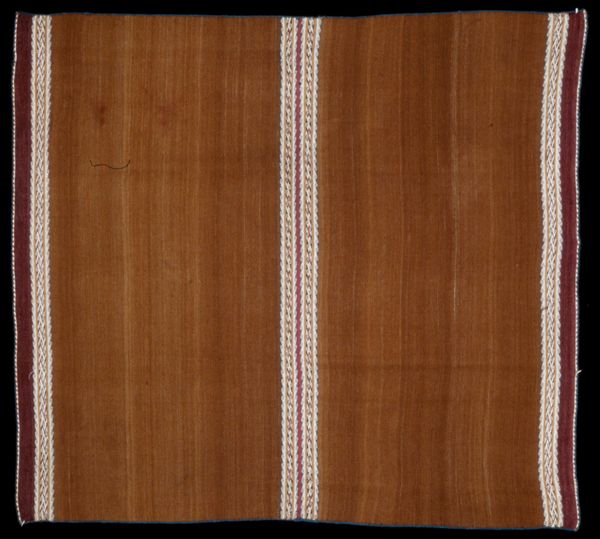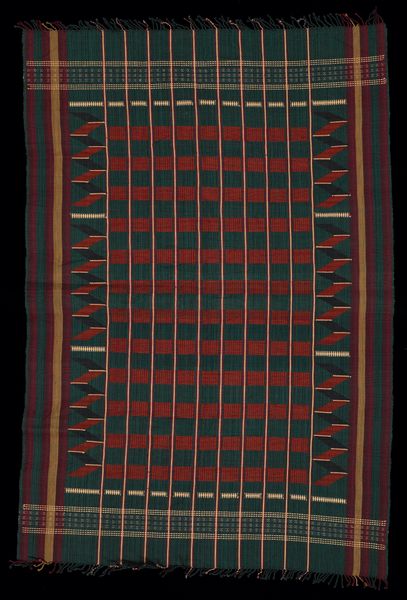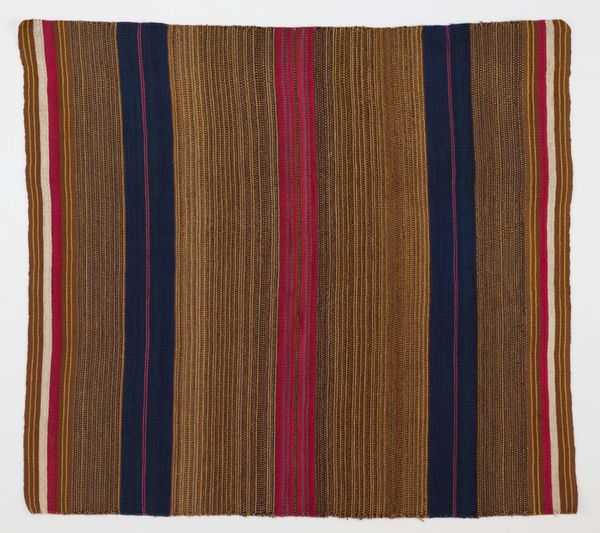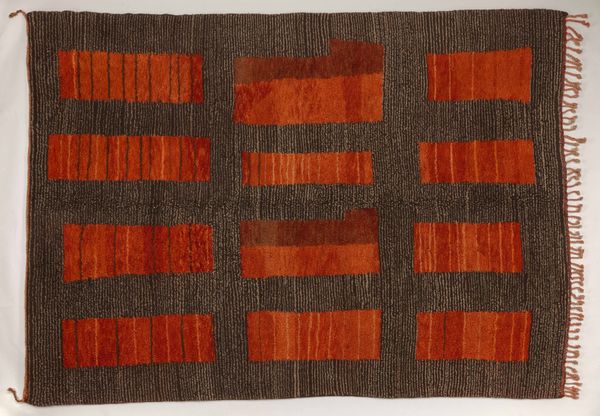
weaving, textile
#
weaving
#
textile
#
geometric pattern
#
geometric
Dimensions: 28 x 33 1/4 in. (71.12 x 84.5 cm)
Copyright: Public Domain
Curator: Before us we have an interesting artifact: a length of “Furnishing Fabric,” woven sometime in the 19th century. Editor: My first impression? It's rather striking, in its simplicity. Bold vertical stripes – the interplay of earthy taupe with vibrant red is unexpectedly modern. Curator: Indeed. It’s a fine example of how textiles can embody an aesthetic sensibility. Notice the careful alternation of color, the precise arrangement of the vertical stripes. The weavers' careful control over rhythm, using geometric shapes, creates a strong sense of visual order. Editor: I wonder about its intended use. "Furnishing fabric" suggests domesticity, yet the starkness seems almost severe. How might this pattern have functioned in a 19th-century interior? Would it have provided a pop of color against darker, more somber surroundings? Was it maybe more for industrial application rather than the everyday consumer? Curator: Perhaps. What the maker or commissioner wanted may also give way to commercial availability, social status, what was accepted by a certain population in a particular area, or the accessibility of particular natural resources for manufacturing. Editor: Absolutely. The vibrant colors, even in what may seem a simple pattern, would be rather impactful in their usage, reflecting on the choices made in decorating both public and private spaces and signaling personal and cultural identity. And given the period, was this machine-made or the product of a smaller, localized textile studio? It would be important in dating, authenticating, and determining the use of natural materials in this fabric. Curator: Without close examination of the weave and dye analysis, pinpointing its origins is a puzzle. The piece invites reflection on design choices and the intent behind a relatively simple pattern. Editor: Ultimately, it makes us think about how patterns impact us and affect interior spaces—both historical and contemporary.
Comments
No comments
Be the first to comment and join the conversation on the ultimate creative platform.
